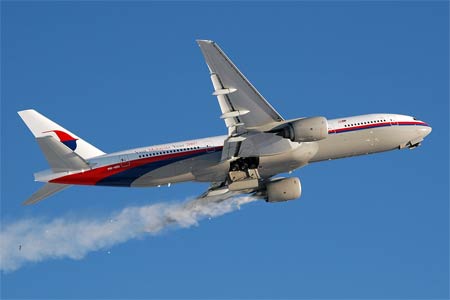




Airplane

AVIATION HISTORY
Aviation experience begins with a few pioneer who, in the final years of the nineteenth century, attempted flight apparatus so called heavier than air, to distinguish them from balloons filled with gas lighter than air.
Unlike balloons, which are held in the atmosphere because of lower gas density inside the aircraft needed a mechanical means of support for that rise by its own resources. Santos Dumont was the first aeronaut who has demonstrated the feasibility of the flight of heavier than air. The flight at the "14 Bis" in Paris on 23 October 1906, in the presence of many witnesses, was a milestone in aviation history, although the primacy of the flight by plane is disputed by several countries. Among the pioneering airmen, we can mention: Gabriel Voisin, Louis Blériot, Wilbur and Orville Wright, and Henry Farman Vuia Trajan.
Since before World War I, airplane crossing the Atlantic non-stop was the goal of airmen and aircraft designers. In 1919, Raymond Orteig, New York, offered a prize of $ 25,000.00 who flew from New York to Paris nonstop. From late 1926 until 1927 several American airmen and the French tried to winning the award. Finally, won the event an air mail pilot, Charles Lindbergh.
In the next three years, many other flights were carried out over the Atlantic, including the first crossing by a woman, Amelia Earhart, in June 1928 along with two other pilots. Four years later, the American aviator to fly alone across the Atlantic.
The international transportation became widely used after World War II aircraft for bigger and faster. The introduction of jet engines, first used on commercial aircraft (Comet), in 1952, by BOAC (British commercial aviation company), gave further impetus to aviation as a means of transport. In thin-1950s, began to be used the Caravelle jet, made in France (Marcel Daussaud / Sud Aviation). In the United States, which entered service in 1960, the Boeing 720 and 707 and two years later, the Douglas DC-8 and Convair 880. Then came the turbo-propellers, more economical and great power. Soviet, British, French and Americans began to study the construction of larger and larger commercial aircraft, for hundreds of passengers and the so-called "supersonic" speeds two to three times higher than that of sound. This item of supersonic international stars were the Concorde (Franco-British) and Tupolev (Russian), carrying 144 passengers and fly up to 90 years, but due to high maintenance costs, fuel passages and eventually have their productions suspended.
The international transportation became widely used after World War II aircraft for bigger and faster. The introduction of jet engines, first used on commercial aircraft (Comet), in 1952, by BOAC (British commercial aviation company), gave further impetus to aviation as a means of transport. In thin-1950s, began to be used the Caravelle jet, made in France (Marcel Daussaud / Sud Aviation). In the United States, which entered service in 1960, the Boeing 720 and 707 and two years later, the Douglas DC-8 and Convair 880. Then came the turbo-propellers, more economical and great power. Soviet, British, French and Americans began to study the construction of larger and larger commercial aircraft, for hundreds of passengers and the so-called "supersonic" speeds two to three times higher than that of sound. This item of supersonic international stars were the Concorde (Franco-British) and Tupolev (Russian), carrying 144 passengers and fly up to 90 years, but due to high maintenance costs, fuel passages and eventually have their productions suspended.





No comments:
Post a Comment